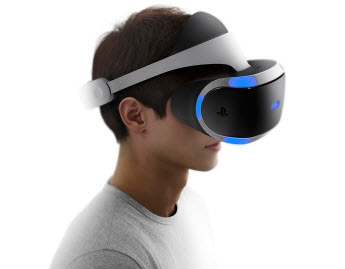Lessons Learned From VR Ads

A year ago, at Mobile World Congress 2016, Samsung announced its first million hardware shipments. This marked the first time a major VR headset manufacturer had reached this milestone. At this same time last year, Mark Zuckerberg’s surprise appearance in Barcelona, Spain, surrounded by an audience all in VR headsets, sparked excitement for the future of VR. The image went viral and capital, entrepreneurs and brands made significant investments into the space.
Today, a year later, critics question whether VR is just a fad or whether it is the next major computing platform. With holiday sales of headsets underwhelming expectations, the cynics commentary has gotten louder. It is important for everyone to keep in mind, that just 12 months ago, there was no HTC Vive on the market. Even Daydream, Playstation and Oculus launched in just the past 6 months. So any opinion or commentary on the space feels too early.
As a VR platform working closely with brands, publishers, and VR content producers, we have seen consistent increased demand in the VR ecosystem over the course of the past year. Rather than sharing an opinion piece of whether this is the year of VR or not, I wanted to share the data that we are seeing from real business and real consumer engagement with our products.
What we see today is higher consumer engagement, higher quality content, and more demand from brands than ever. This February marked a new record with substantial year-over-year growth. Today, we have helped more than 100 brands and publishers deliver over 100 million VR ad impressions. Here are the key takeaways based on our data and case studies.
The real question to justify whether VR actually will take off is around consumer engagement. Almost every brand has asked what the uplift and engagement will be when they invest in VR. For every campaign, we have run both VR and 2D experiences to compare the performance across the same placement. We started by comparing 360° photos with 2D images. Then, we compared 360° VR videos with 2D videos. These experiments were performed across all platforms, including VR headsets, smartphones, tablets and desktops.
We measured heat-map (eyeballs) tracking, time spent in the experience, and click-through-rate for the display units. All data suggests that VR experiences gain higher attention from audiences. With higher engagement from audiences, brands can ensure that their message is delivered more effectively.
Brands are investing even more in VR technology
Initially we thought VR experiences made sense for travel and real estate. The nature of their products is one that aligns well with a 360° experience. In reality however, we have seen a broad range of VR content from brands. You may not think a VR campaign would be straightforward for insurance, alcohol, kitty litter, or even fast food companies, but we have seen brands from all verticals -- from Chick-fil-A to Cartier -- bring audiences into their narrative through this immersive media format. (Case studies are available here.)
Our takeaway: Every brand can effectively use VR for its marketing. Immersing your potential customer in your brand’s narrative is not a new objective to the marketer, and VR is being experimented with and successfully executed by creatives the same way we have seen these brands lean into online video 10 years ago.
And production value is getting stronger as well. One year ago, stereoscopic 360° content (VR content that is created for dimension of left and right eyes) was still in the lab. Not many brands and production partners knew how to film it. Today, we are serving advertising campaigns with stereoscopic video on a daily basis. We are receiving inbounds about spatial audios (360° audio), 8K resolution, 180° 3D (theater-like experience), and Web VR (Web Browser inside VR headsets). This all demonstrates deeper engagement with the medium. Brands, agencies and their production partners are learning into this technology and creating better VR experiences by the day.
Read more of this blog at omnivirt.com.
Brad Phaisan is CEO of OmniVirt, a 360° video and virtual reality advertising platform.
Multichannel Newsletter
The smarter way to stay on top of the multichannel video marketplace. Sign up below.



